By Amanda Hughes, Asst. Manager, Central Library Maryland Department

Marylanders love horses. From the thoroughbred farms of Harford, Howard, and Cecil counties, to the wild ponies of Assateague, to the Baltimore Arabbers, horses and Maryland go way back.
So it’s no surprise that one of horse racing’s biggest events calls Baltimore home. The Preakness Stakes, along with the Kentucky Derby and the Belmont Stakes, are the height of thoroughbred racing. Called the 2nd jewel in the Triple Crown, the Preakness Stakes, or just “the Preakness” to locals, this event has become a touchstone of Baltimore culture. Its popularity has spread beyond the racing world and is celebrated as a day for all things Maryland, and all things Baltimore.
The Pimlico Race track was opened in 1870 by the Maryland Jockey Club, a racing club that was founded in 1743. The first spring race meet was held in May of 1873 and was dubbed the Preakness Stakes by then Governor of Maryland, Oden Bowie in honor of the winning horse at the Dinner Party Stakes held in New Jersey on the day Pimlico opened (October 25, 1870.) Many famous horses have competed at Pimlico Race Course including Man O’War, Secretariat, Barbaro, American Pharaoh, and the famous “Pimlico Special” race between Triple Crown winner War Admiral and Seabiscuit in 1938. The day before Preakness Stakes, Pimlico hosts the Black-Eyed Susan Stakes, a race just for fillies, part of a series of races unofficially known as the “Triple Tiara” a counterpart to the three Triple Crown races that also includes the Kentucky Oaks and the Acorn Stakes, held at Belmont Park. This doesn’t mean that fillies aren’t welcome in the main event; in fact more fillies have won the Preakness Stakes than either of the other Triple Crown races. The Maryland Jockey Club continued to sponsor the Preakness well into the 21st century and even published their own magazine, Pimlico Pictorial until the late 1990s.
Also called “The Race for the Black-Eyed Susans” after the blanket of yellow flowers draped over the winner, the Preakness Stakes have long held a prominent place in Baltimore’s culture, especially in high society. Beginning in 1936 a Preakness Ball was held every year for Baltimore’s elite with one young woman being elected Queen of the Ball. According to tradition, men who participated in the Steeplechase and fox hunting wore pink to the ball.
In more modern times, Preakness has become a reason for one and all to celebrate the season. Long before the infamous infield parties of the past decade, Preakness was a reason for Baltimoreans of all ages to celebrate, with weeklong festivities and events for the whole family. Preakness has even inspired several cocktails, the original The Preakness and the more commonly known Black-Eyed Susan. Recipes for both these and other Maryland inspired cocktails can be found in Forgotten Maryland Cocktails. You can read about the history of The Preakness in The Preakness: Middle Jewel of the Triple Crown and the history of Hunt Clubs in The Maryland Hunt Cup: Past and Present. All of these titles are available for use in the Maryland Department.
Maryland’s love of horses and equestrian culture is not limited to thoroughbred racing. The Maryland Hunt Club holds annual Steeplechase events and even a yearly fox hunt! Don’t worry though, these days no foxes are harmed in pursuit of a good time. Most attendees to the yearly hunt events end the day never having seen a fox at all. There are also annual hunting shows held at Pimlico, put on by the Maryland Hunt Club.
For more information of Preakness, Pimlico, and Maryland equestrian culture in general, visit the Maryland Department for access to these and other photographs, publications, books, and ephemera.
To read about the history of racing and horse culture in Maryland at home, check out these titles:
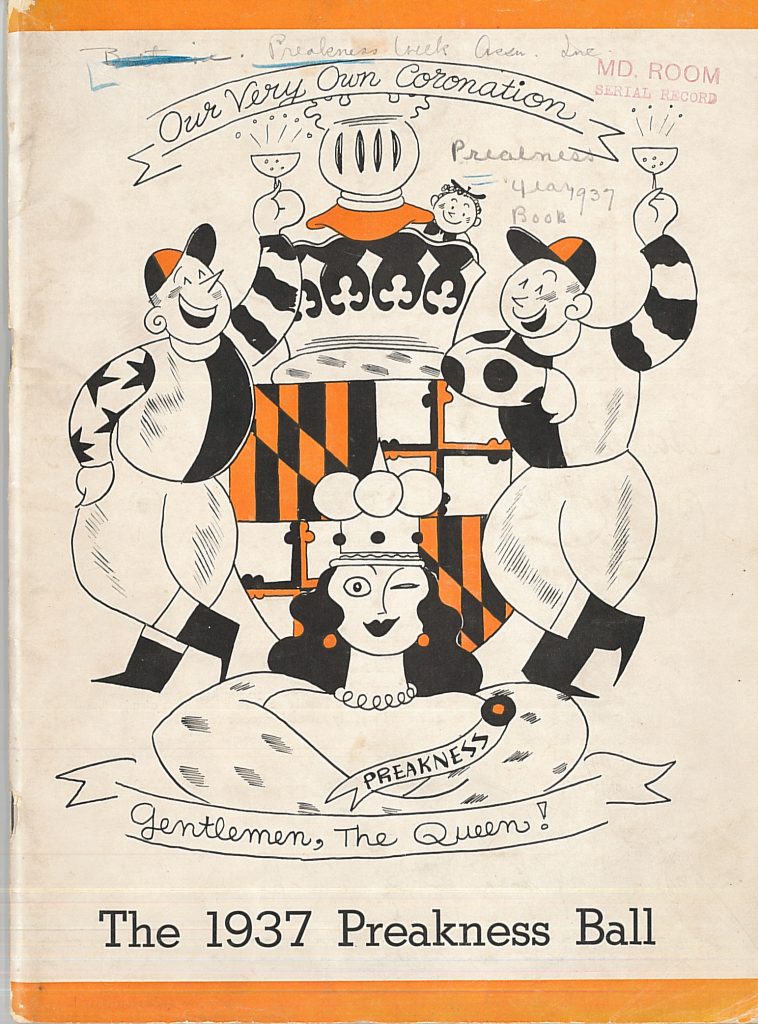
Preakness Ball Program, 1937 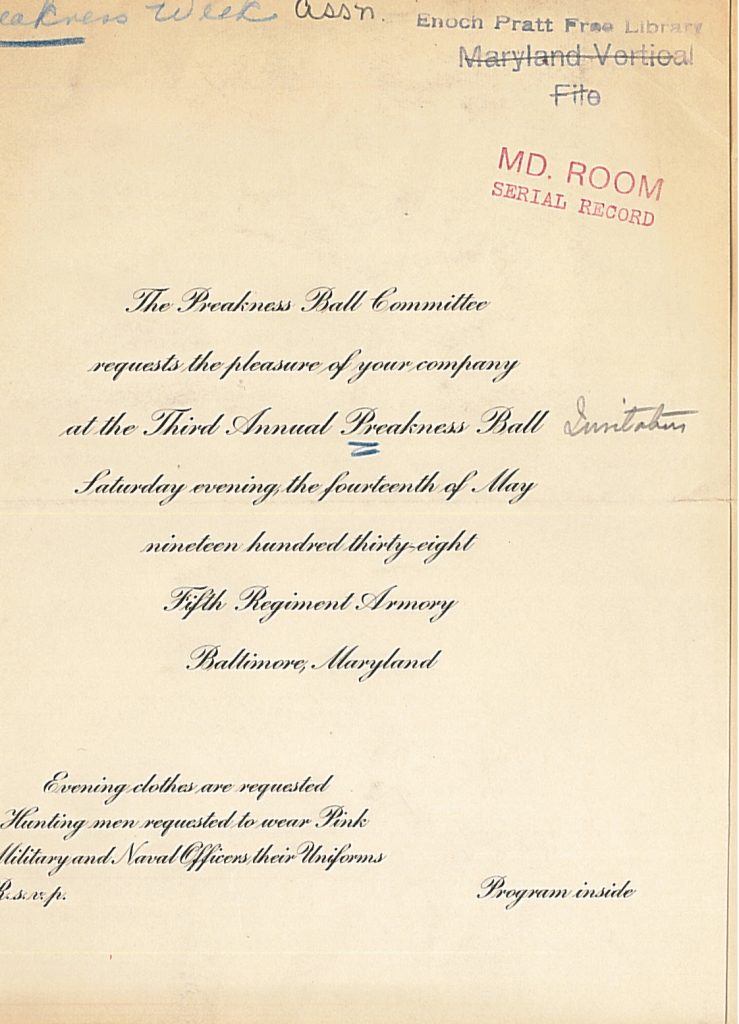
Preakness Ball Invitation 1938 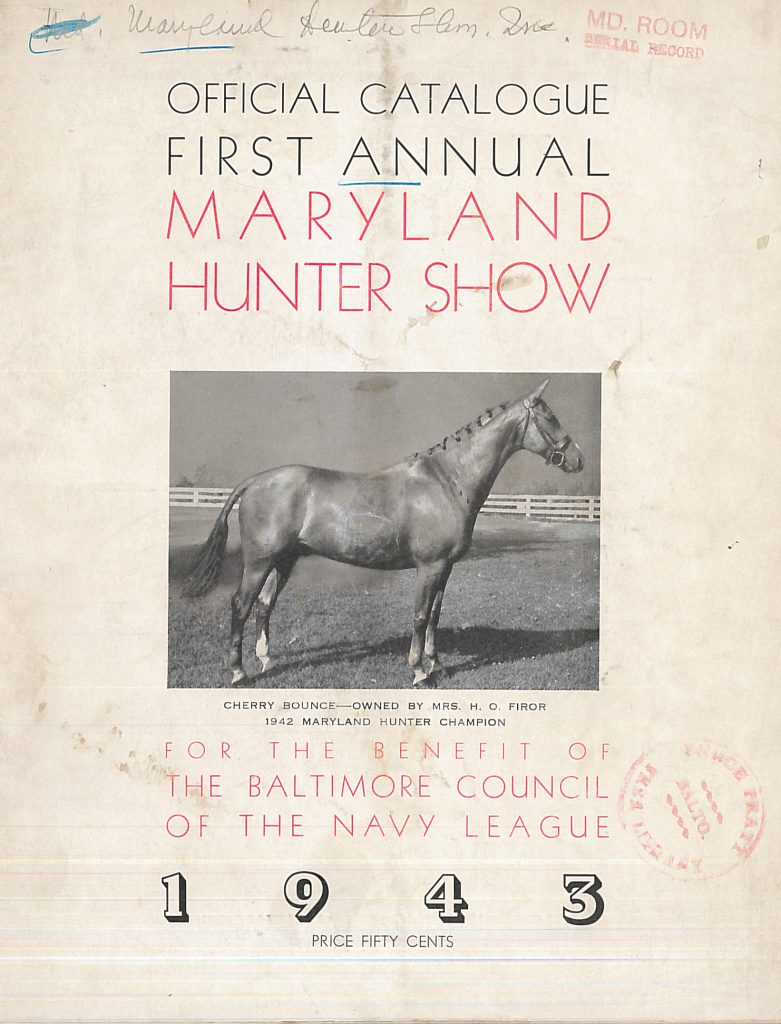
Annual Hunt Show Program 1943 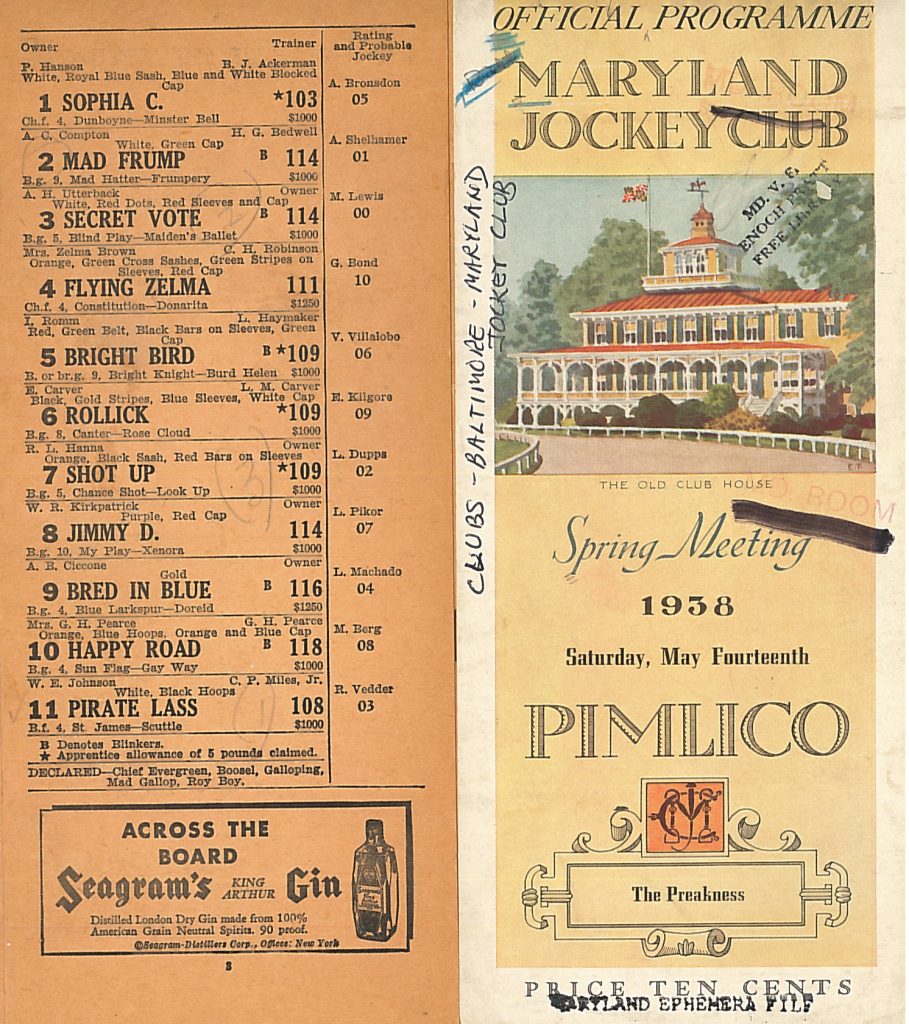
Maryland Jockey Club Betting Program, 1938 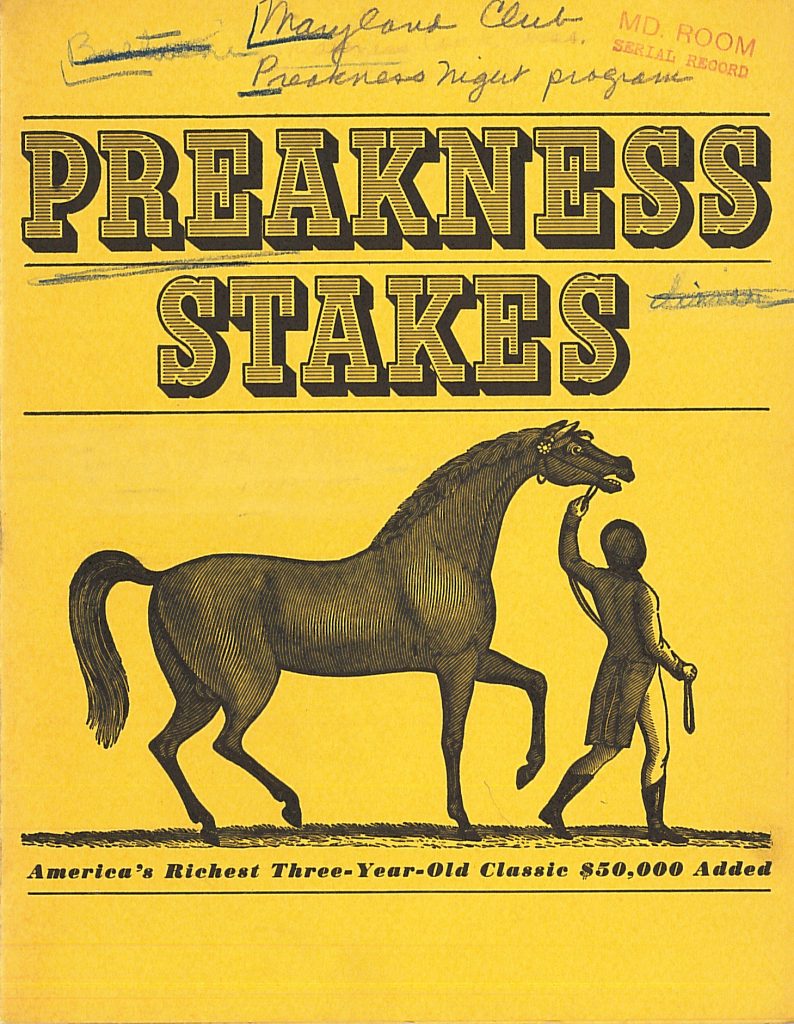
Maryland Club Preakness Party Program, Side 1 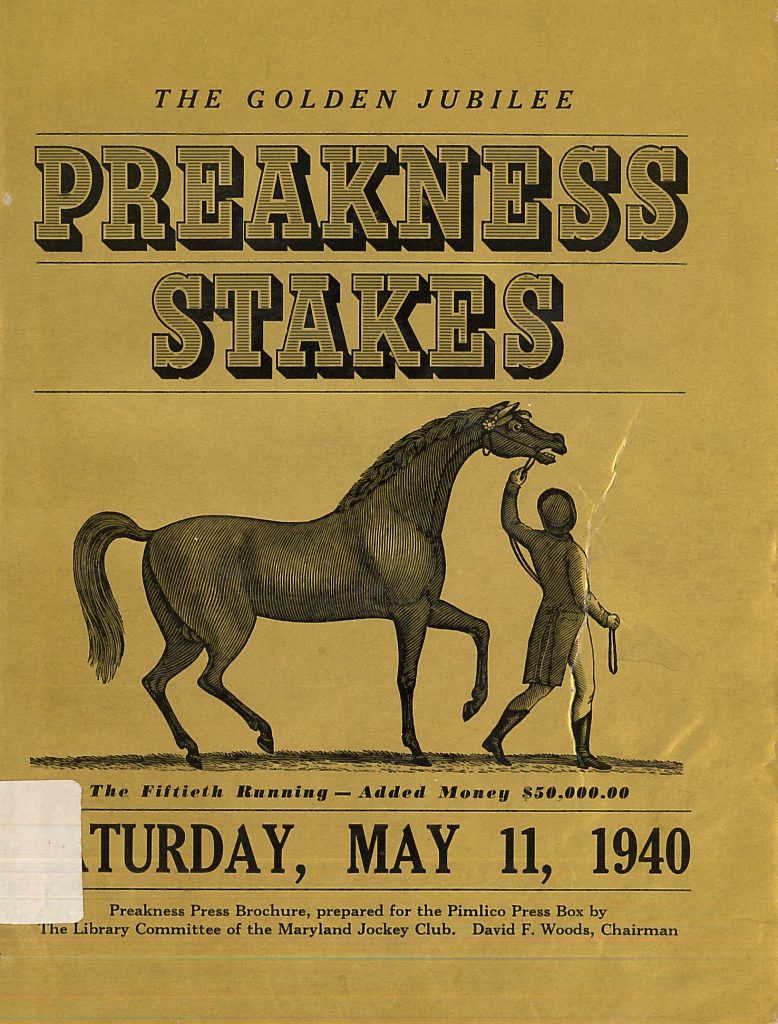
Program 50th Anniversary Preakness Stakes, 1940 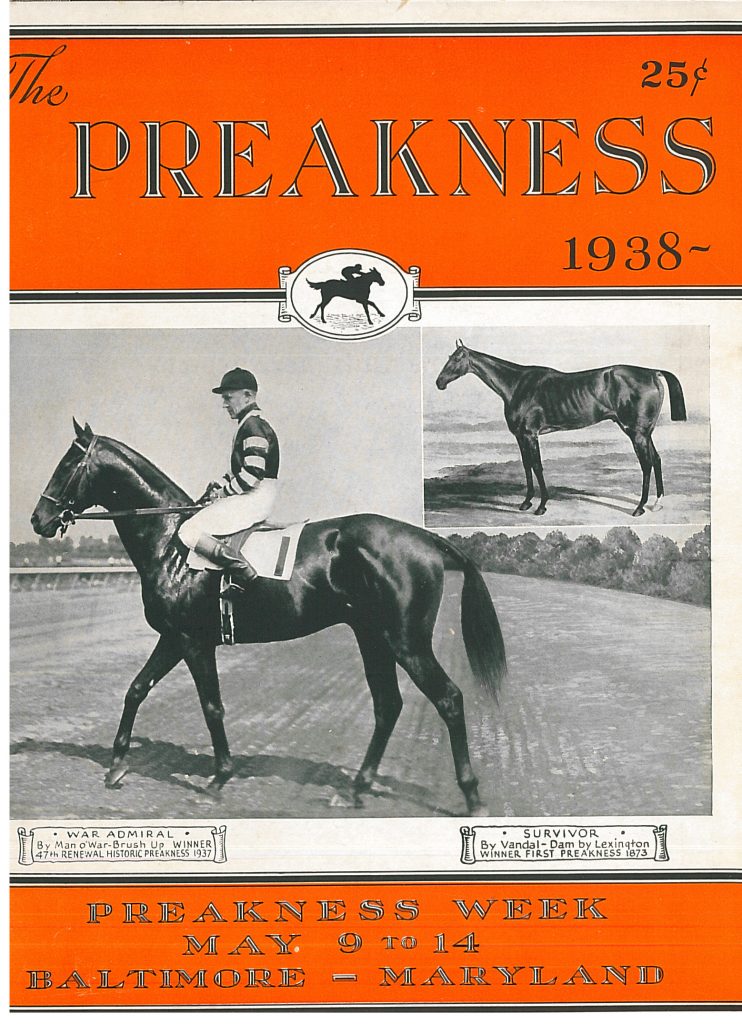
Preakness Staked Program, 1938 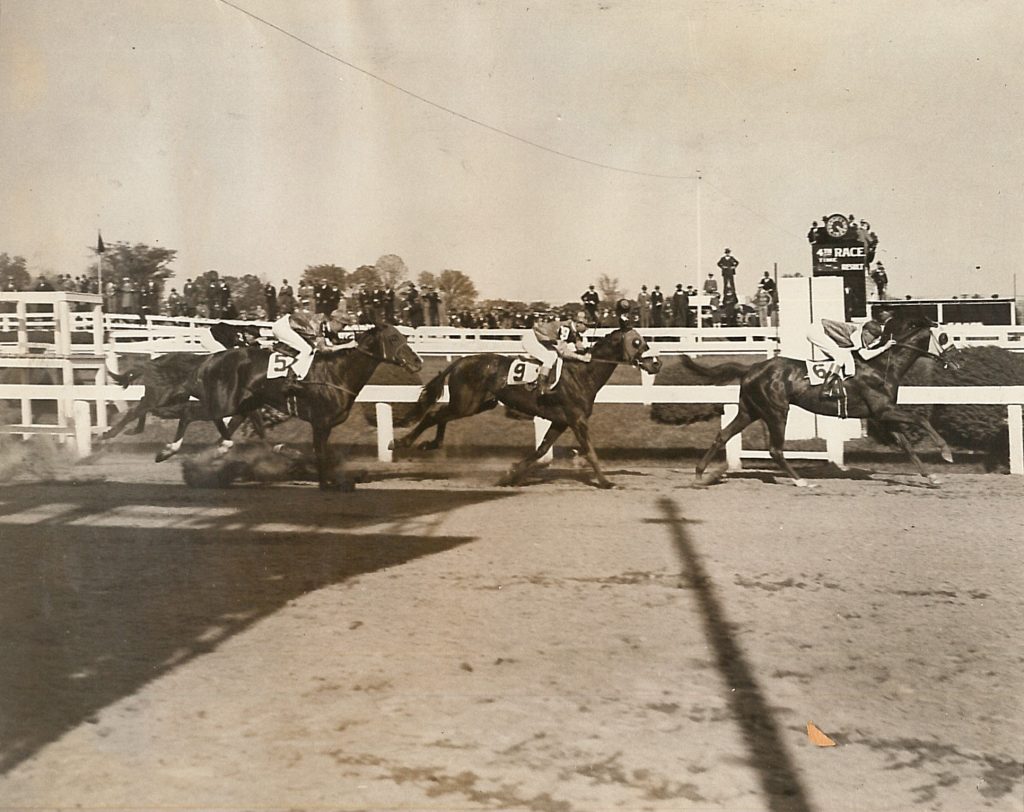
Photo of Riders in Preakness Stakes, c. 1930